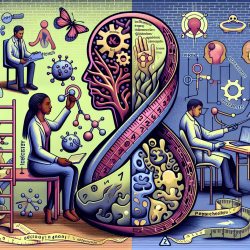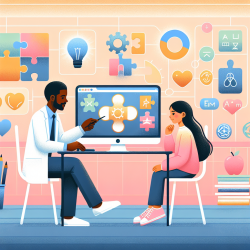As practitioners dedicated to enhancing the lives of children with autism, we are always on the lookout for effective, evidence-based strategies. One such promising approach is highlighted in the research paper "Photographs and Parent Training to Support Conversations about Past Events between Caregivers and Children with Autism." This study provides valuable insights into how simple tools like family photos, combined with parent training and telecoaching, can significantly improve communication between caregivers and children with autism.
Understanding the Research
The study utilized a multi-method design to evaluate the effects of family photographs, training, and telecoaching on parental implementation of communication strategies. Three parent-child dyads participated, and the results were compelling. The use of photographs increased the communication strategies used by all parents. Telecoaching further enhanced strategy use for two of the parents. Parents reported spontaneous generalization and maintenance of these strategies, indicating long-term benefits.
Why Family Photos?
Visual supports have long been recognized as effective tools for aiding communication in children with autism. Family photos are particularly advantageous because they are easy to personalize, readily accessible, and cost-effective. The study found that family photos naturally cue parents to engage in more communication strategies, such as asking WH-questions (who, what, where, when, why) and expanding on their child's responses.
Implementing the Findings
Here are some practical steps for incorporating these findings into your practice:
- Use Family Photos: Encourage parents to use family photos during conversations with their children. This can help evoke memories and provide a visual context that makes it easier for the child to engage.
- Provide Training: Offer training sessions for parents on how to use these photos effectively. Teach them strategies like modeling language, offering opportunities for the child to respond, and expanding on the child's utterances.
- Telecoaching: Implement telecoaching sessions to provide ongoing support and feedback. This can help parents refine their techniques and stay motivated.
Encouraging Further Research
While the study's findings are promising, further research is needed to explore the long-term effects and potential applications of using family photos as a communication tool. Practitioners are encouraged to document their experiences and share their findings to contribute to the growing body of evidence.
Conclusion
The use of family photos, combined with parent training and telecoaching, offers a simple yet effective way to improve communication between caregivers and children with autism. By implementing these strategies, practitioners can help create meaningful, long-lasting improvements in the lives of these children and their families.
To read the original research paper, please follow this link: Photographs and Parent Training to Support Conversations about Past Events between Caregivers and Children with Autism










